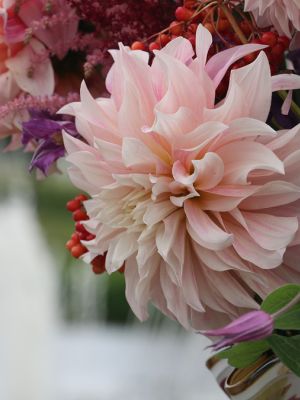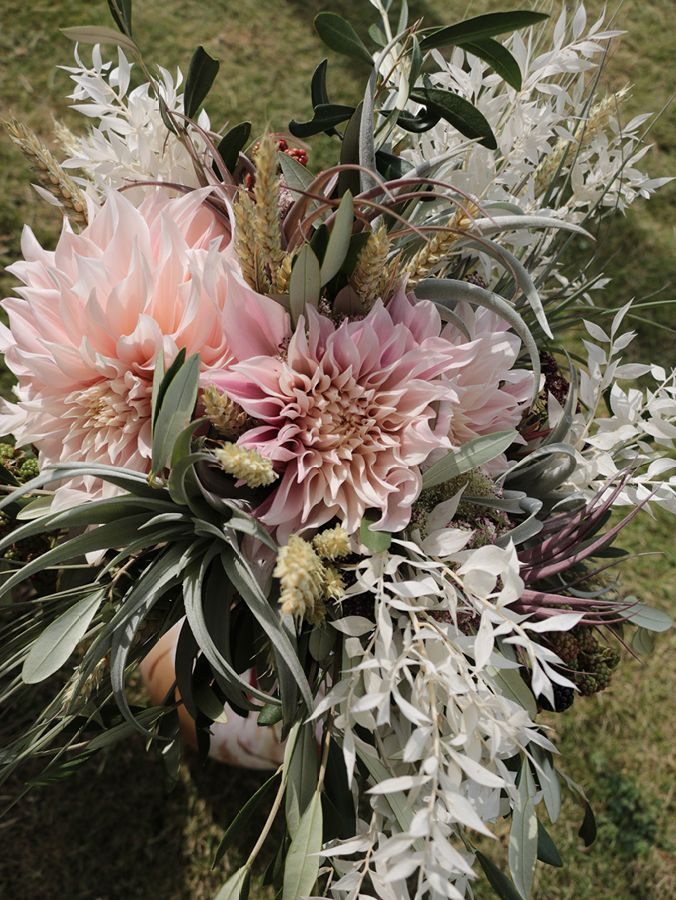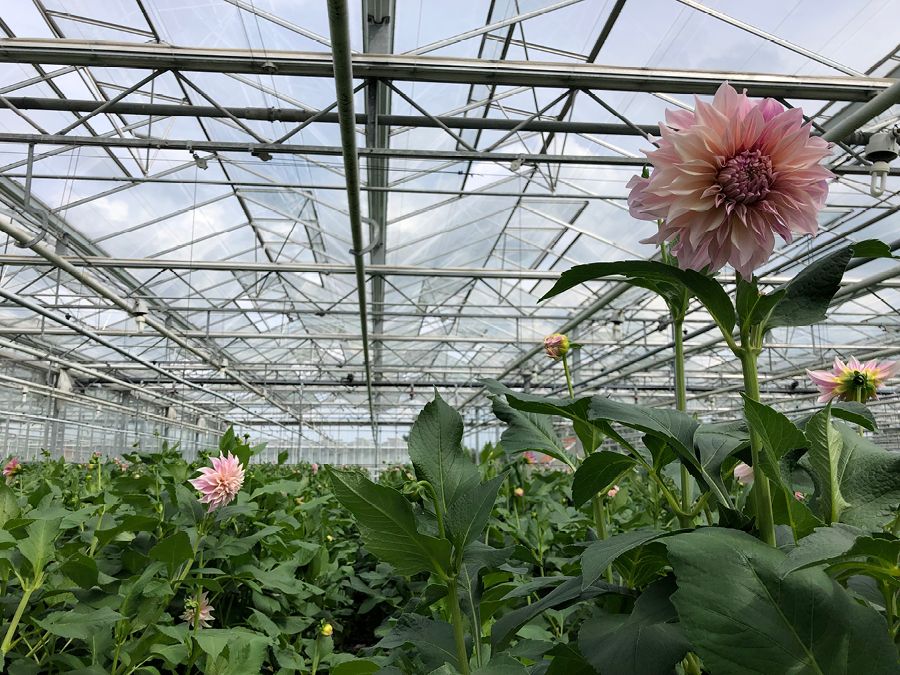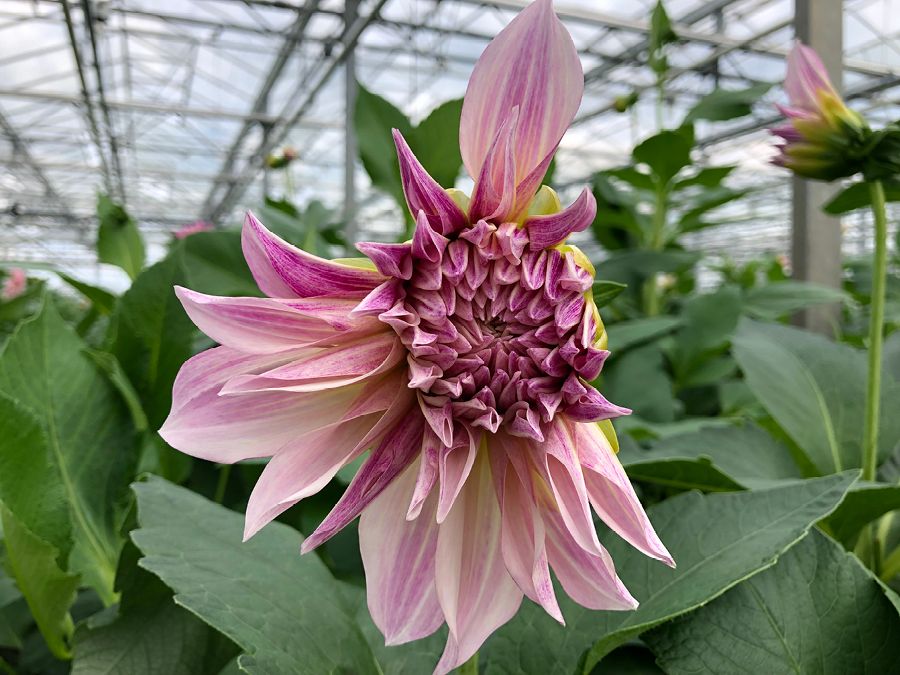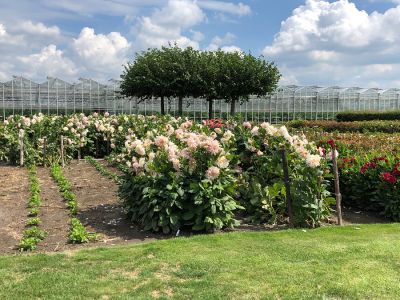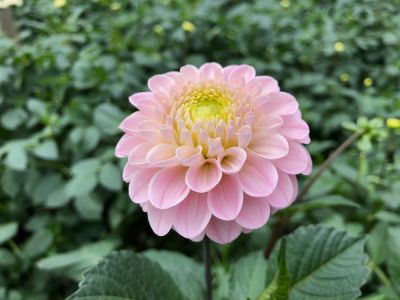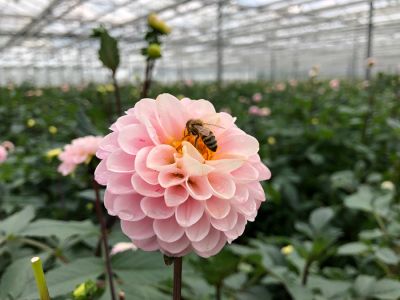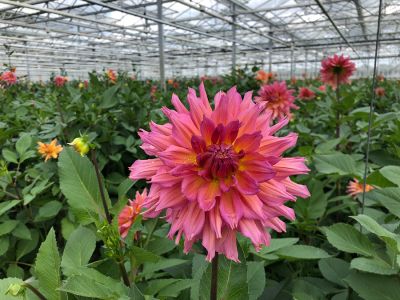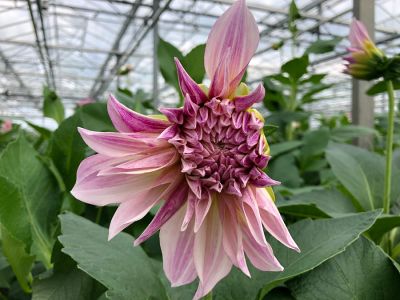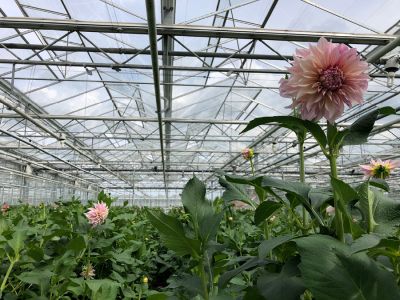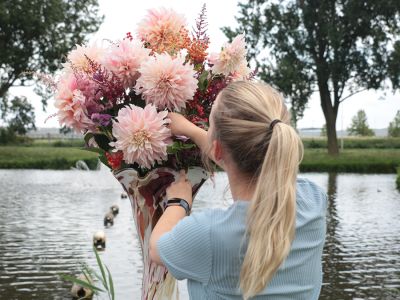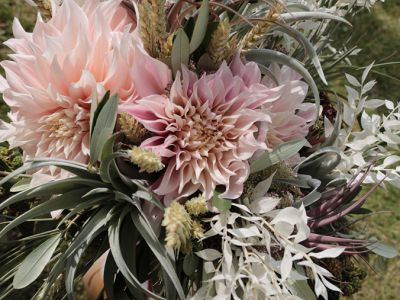Dahlia Café au lait
In the spotlights
The dahlia is a tuberous plant that originates from Mexico. This tuber was brought to Europe in the time that America was discovered. Since then, this cheerful flower is indispensable in the gardens and there are more than 20,000 types of cut available. The dahlia "Café au Lait" is very popular among florists. We visited H&BR van den Bosch to find out the story behind this exclusive appearance.
Nostalgic
The dahlia is a flower with a rich history and is a true world traveler. In Mexico, the flower is still very important for a variety of reasons. The flower itself is honored because of the resemblance to the sun. The leaf is used as animal food and the tuber for medicinal purposes.
When the flower arrived to Europe it was crossed and multiplied, so in a very short time it could be found everywhere in Europe. The flower is especially popular because of the many different shapes and colors. The dahlia is ideal for an occasional flower work. They should not be missing in any bridal work, funeral arrangements or large events. The harvest and transportation under the right conditions are the biggest challenges.
The flowers are harvested at the moment the petals begin to open (but not fully unfolded.) This way they stay beautiful in the vase for the longest time. If they are cut too early the petals will not open. Most varieties have a limited shelf life so it is necessary to transport the flowers in water and in a cool place. In this way the flower will have a longer vase life.
“Coffee with milk”
The dahlia "Café au Lait" variety belongs in the luxury segment. The size of this special variety is breathtaking. It is a decorative floral dahlia with wide ribbon flowers with an apricot to beige hue. This is also where the name "Coffee with milk" comes from. The best-known dahlia varieties in this crop are pompon varieties, decorative varieties and water lily varieties. This has to do with the shape of the leaf, the size and color of the flower. The "Café au Lait" is a decorative variety.
Our partner Regine Motmans from the Florigineel Company accompanied us during the visit to H&BR van den Bosch. We asked her: "Why do you love working with this dahlia as a flower stylist?"

The cultivation
During our visit we spoke with Jeroen van den Bosch. He graduated in Plant Sciences at the University of Wageningen. Under the guidance of his father and André van der Meer, Jeroen helps in developing the company.
Family business
In 1910 Pieter van den Bosch started an agricultural business. Now, more than 100 years later the company has grown into a specialist in growing dahlias and breeding the Hypericum Flair® series. They are proud to have the title "By Royal Decree of Royal Supplier". You are eligible for this only if you have been in existence for at least 100 years and, for example, have an innovative or sustainable character. The Hypericum Flair® series that H&BR van den Bosch breeds comes from Africa. In Africa, they indirectly provide employment and ensure a decent income with good working conditions. The dahlias are grown in Rijnsburg.
The sons of Pieter, Piet and Henk entered the company soon after the Second World War. At that time there were completely different crops grown, including Callas. They turned out to be innovative entrepreneurs and laid the foundation for the future. Now the daily management is in the hands of Bernard and son Jeroen. They are now the third and fourth generation of the company!
Dahlias from the greenhouse
Not all types of dahlias that grow outside are also suitable for growing indoors. It is mainly important that the branches are nice, thick and sturdy. Most species only get these strong stems if they are out in the open. Here they can get all the nutrients from the soil and the sun light on the stems. H&BR van den Bosch grows a range of dahlias on 18,000 m² in the greenhouses that are suitable for this. Seven different varieties are currently being grown. The production of the flowers in the greenhouses can be controlled in detail by the use of climate control. Nearly 900,000 dahlias were cut in the 2018 season!
The cultivation
The dahlia is a root vegetable. They are planted in December and January. After harvesting, the most labor-intensive aspect of this cultivation is "fluffing" (also called "thieves"). The side shoots are removed from the armpits under the flower with lint. This keeps the nutrition and strength in the main branch, so that the quality of the stem and flower remains healthier. When the flower has finished flowering and has been emptied in the fall, the plants are bruised and the tubers spit through the soil. The soil is then given a rest period and is then prepared for planting. In December and January, tubers full of new energy are planted again, ready after a few months.
FloraPodium, 29 August 2019






